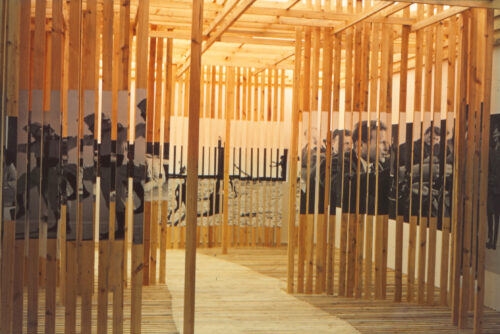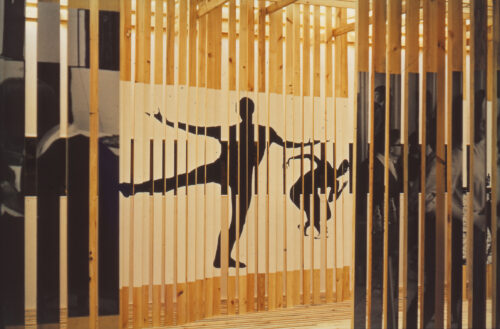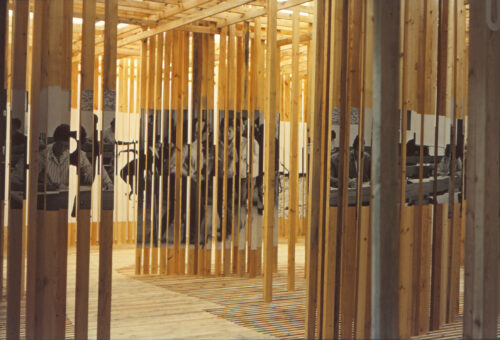Yugoslav pavilion at the 13th Milan Triennial, 1964
The Yugoslav pavilion at the 13th Milan Triennial was designed by the Croatian architect Vjenceslav Richter, who had already made a name for himself with the design of exhibition pavilions at home and abroad.
Curated by the semiotician Umberto Eco and the architect Vittorio Gregotti, the 13th Milan Triennial was focussed on leisure. The Yugoslav pavilion featured a dense three-dimensional grid pattern using a single structural element: wooden beams measuring 6×8 cm, arranged vertically and horizontally. The resulting slatted walls (with which Richter had already experimented at the Yugoslavian ceramics exhibition in London in 1953) divided the space into light-flooded units and created a unique rhythm. As one moved through the pavilion, the look of the room changed. The same kinetic effect was achieved by the photos (the only featured items in the pavilion) that were cut up and applied to the slats. These could only be read from certain perspectives, disappearing as the viewer approached or moved away. With the pavilion, Richter once again achieved an artistic synthesis: more important than the individual items on display was the spatial arrangement and overall experience.
Critics praised this pavilion as a major contribution to the development of Open Form in architecture. Although not physically transformable, Richter’s creation nonetheless offered a dynamic, constantly shifting spatial experience that directly challenged the viewer’s perceptions.


